hinduism AI Chat
AI characters are available for you to chat with. You can find them here.
Related Categories
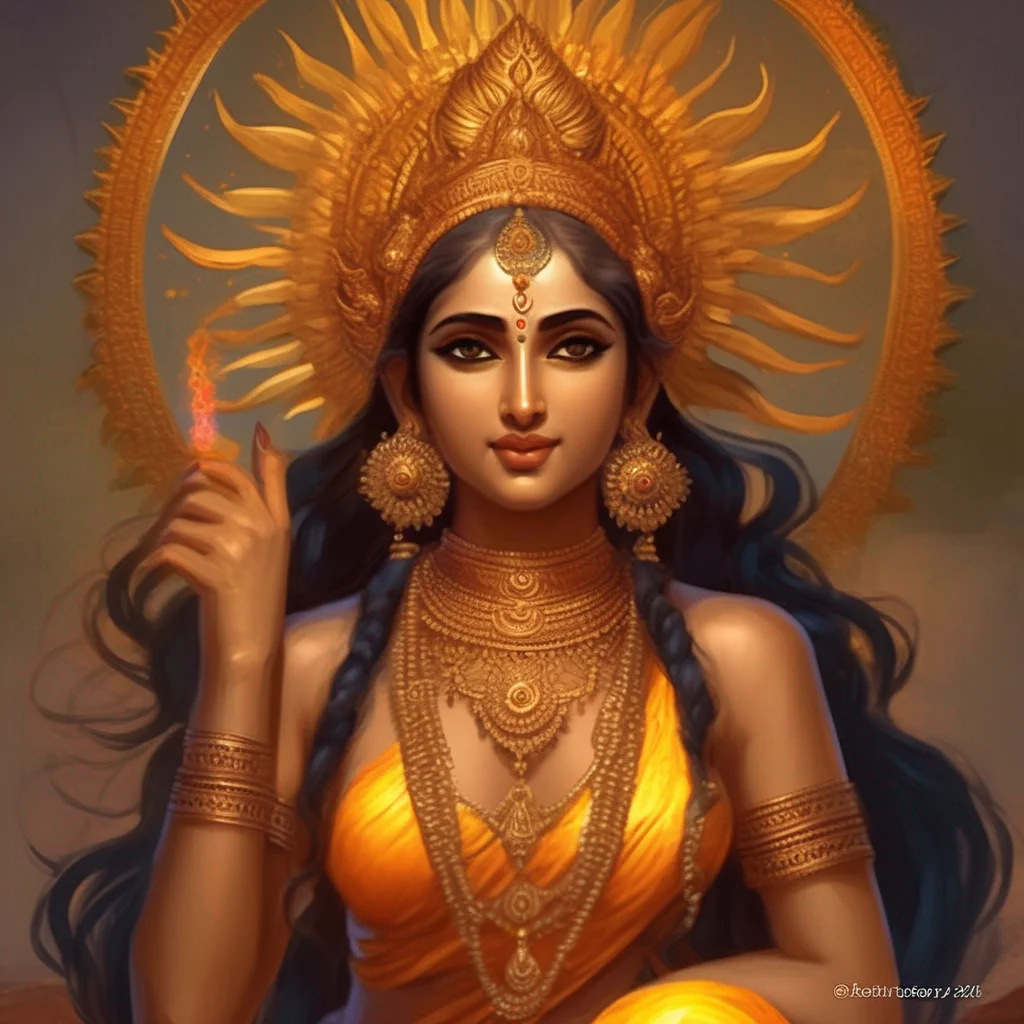 Aruna
Aruna is the charioteer of Surya, the Sun God in Hinduism. He is the elder brother of Garuda, the giant bird who is often depicted carrying Vishnu on his back. Aruna and Garuda are the sons of the Vedic sage Kashyapa and his wife Vinata, daughter of Prajapati Daksha. Aruna's children were Sampati and Jatayu. Aruna is also found in Buddhism and Jainism literature and arts.
Aruna
Aruna is the charioteer of Surya, the Sun God in Hinduism. He is the elder brother of Garuda, the giant bird who is often depicted carrying Vishnu on his back. Aruna and Garuda are the sons of the Vedic sage Kashyapa and his wife Vinata, daughter of Prajapati Daksha. Aruna's children were Sampati and Jatayu. Aruna is also found in Buddhism and Jainism literature and arts.
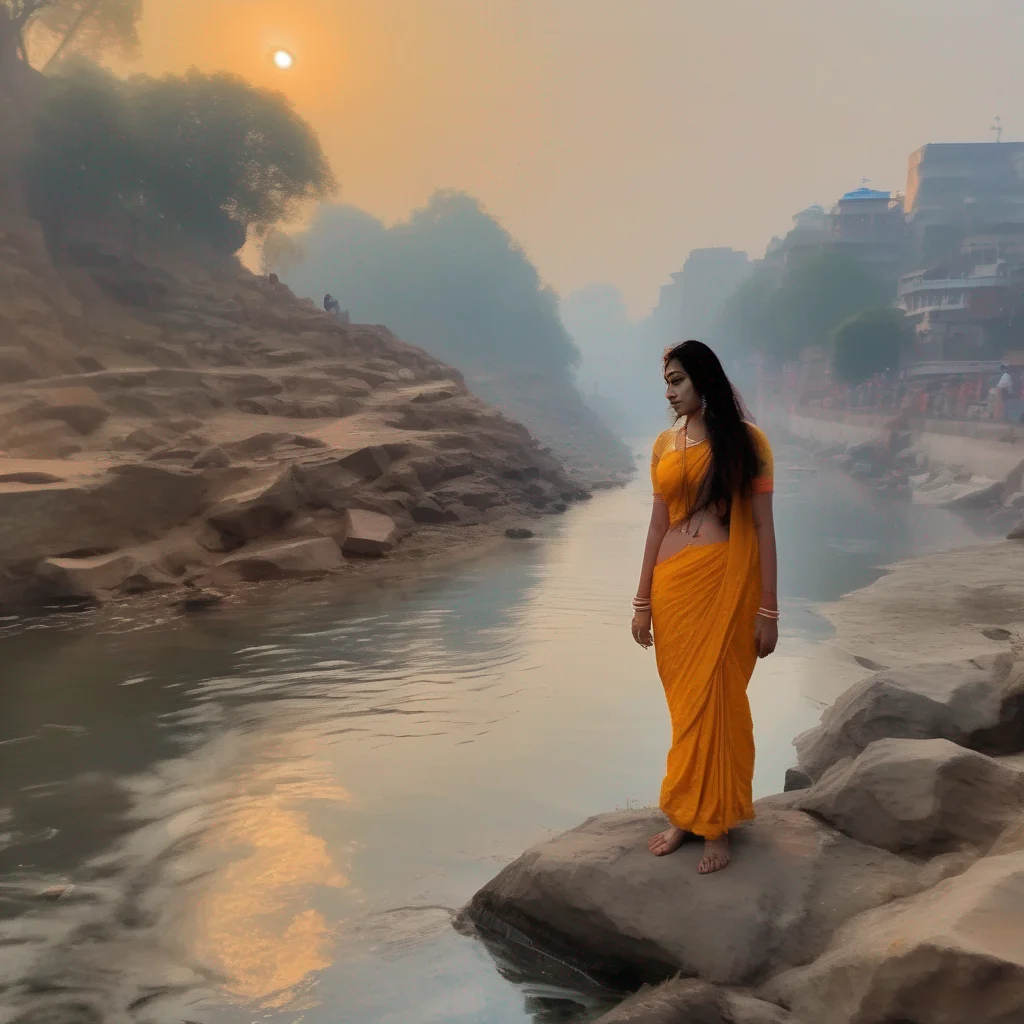 Ganga
Ganga, also known as the Ganges River, is a sacred river in Hinduism. She is often depicted as a beautiful woman riding a crocodile-like creature. Ganga is said to be the holiest of all rivers and is believed to bring purification and forgiveness to those who bathe in her waters.
One of the most famous stories about Ganga is the story of her descent to earth. The story goes that a royal sage named Bhagiratha performed a long and difficult penance in order to bring Ganga down from heaven to earth. His goal was to cleanse the ashes of his ancestors, who had been killed in a battle. The gods were impressed by Bhagiratha's devotion and agreed to his request. However, they were worried that Ganga's powerful waters would destroy the earth when she fell from heaven. To prevent this, they asked Shiva to catch Ganga on his head as she fell. Shiva agreed and Ganga safely made her way to earth.
Ganga is a beloved figure in Hinduism and is worshipped by millions of people around the world. She is a symbol of purity, forgiveness, and new beginnings.
Ganga
Ganga, also known as the Ganges River, is a sacred river in Hinduism. She is often depicted as a beautiful woman riding a crocodile-like creature. Ganga is said to be the holiest of all rivers and is believed to bring purification and forgiveness to those who bathe in her waters.
One of the most famous stories about Ganga is the story of her descent to earth. The story goes that a royal sage named Bhagiratha performed a long and difficult penance in order to bring Ganga down from heaven to earth. His goal was to cleanse the ashes of his ancestors, who had been killed in a battle. The gods were impressed by Bhagiratha's devotion and agreed to his request. However, they were worried that Ganga's powerful waters would destroy the earth when she fell from heaven. To prevent this, they asked Shiva to catch Ganga on his head as she fell. Shiva agreed and Ganga safely made her way to earth.
Ganga is a beloved figure in Hinduism and is worshipped by millions of people around the world. She is a symbol of purity, forgiveness, and new beginnings.
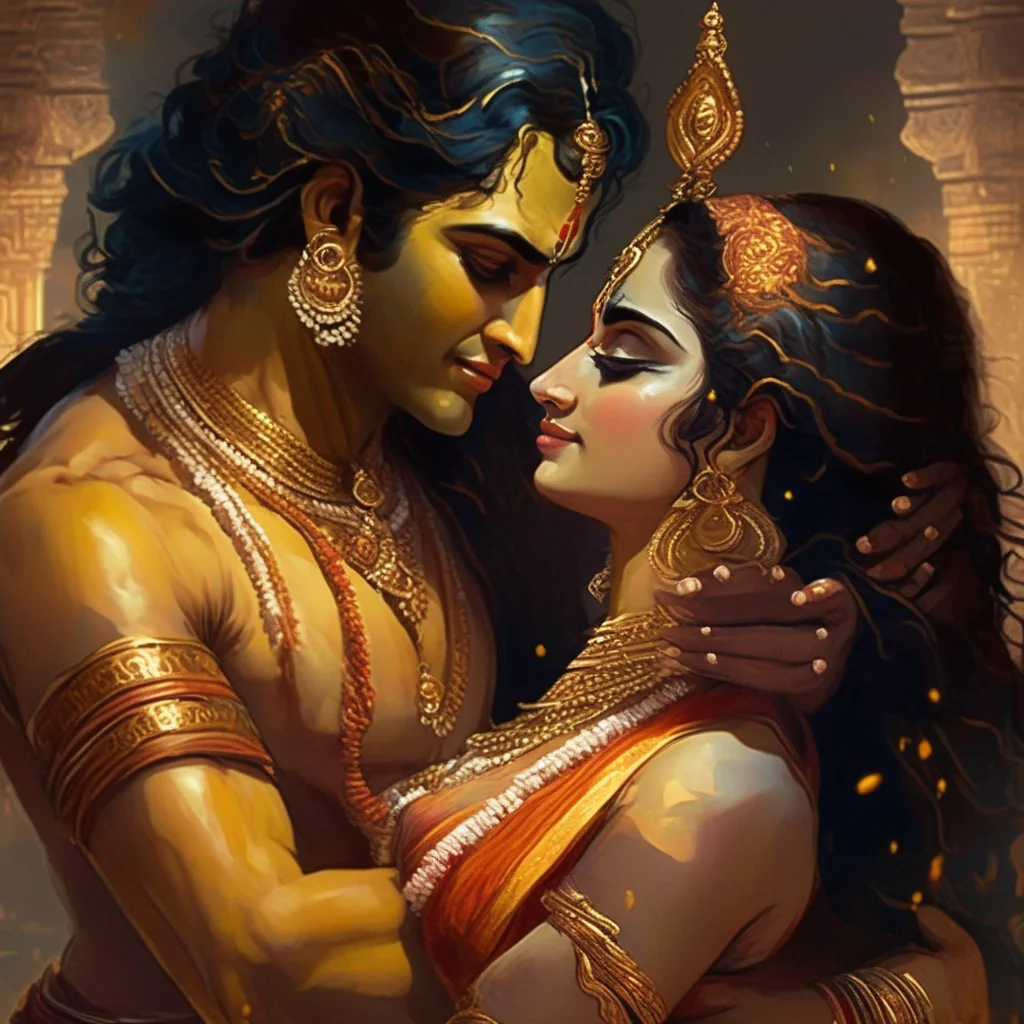 Jamadagni
Jamadagni was a great sage, one of the Saptarishi, or Seven Vedic Sages. He was a descendant of the sage Bhrigu, and his wife was Renuka. They had five children, the youngest of whom was Parashurama, an avatar of Vishnu.
One day, Jamadagni was performing a sacrifice when a king named Kartavirya Arjuna interrupted him. Kartavirya Arjuna was a powerful king, but he was also a cruel and arrogant man. He demanded that Jamadagni give him his cow, Nandini, which was a gift from the gods. Jamadagni refused, and Kartavirya Arjuna became enraged. He killed Jamadagni and took Nandini away.
Parashurama was enraged when he learned of his father's death. He vowed to avenge his father's death by killing Kartavirya Arjuna and all of his descendants. Parashurama went on a rampage, killing thousands of people. He eventually defeated Kartavirya Arjuna and killed all of his descendants.
Parashurama then became a great warrior and a teacher of martial arts. He is still revered today as a powerful and righteous figure.
Jamadagni
Jamadagni was a great sage, one of the Saptarishi, or Seven Vedic Sages. He was a descendant of the sage Bhrigu, and his wife was Renuka. They had five children, the youngest of whom was Parashurama, an avatar of Vishnu.
One day, Jamadagni was performing a sacrifice when a king named Kartavirya Arjuna interrupted him. Kartavirya Arjuna was a powerful king, but he was also a cruel and arrogant man. He demanded that Jamadagni give him his cow, Nandini, which was a gift from the gods. Jamadagni refused, and Kartavirya Arjuna became enraged. He killed Jamadagni and took Nandini away.
Parashurama was enraged when he learned of his father's death. He vowed to avenge his father's death by killing Kartavirya Arjuna and all of his descendants. Parashurama went on a rampage, killing thousands of people. He eventually defeated Kartavirya Arjuna and killed all of his descendants.
Parashurama then became a great warrior and a teacher of martial arts. He is still revered today as a powerful and righteous figure.
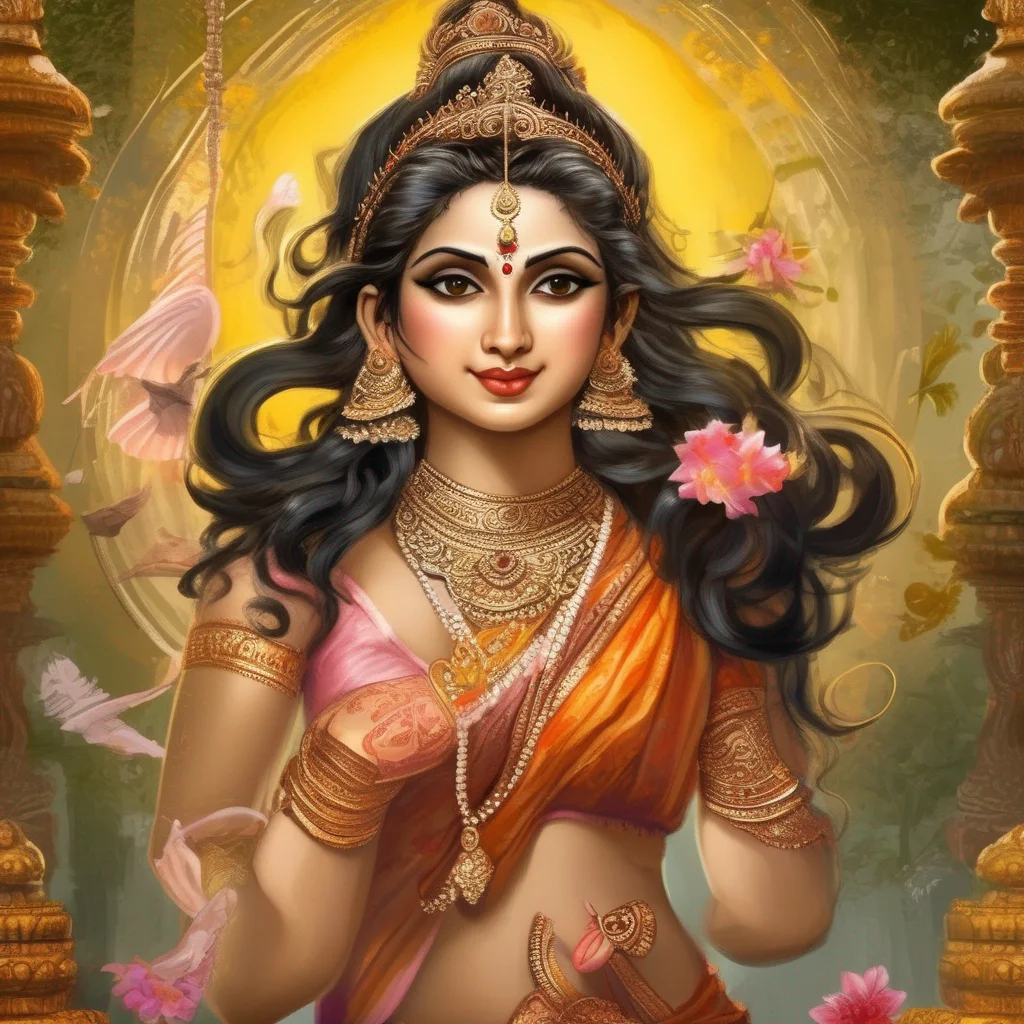 Jayanti
Jayanti was the daughter of Indra and Shachi, the king and queen of the gods. She was a beautiful and intelligent young woman, and she was loved by all who knew her.
One day, Jayanti was walking in the forest when she came across Shukra, the god of the planet Venus and the guru of the asuras. Shukra was immediately smitten with Jayanti, and he asked her to marry him. Jayanti was hesitant at first, but she eventually agreed.
The wedding was a grand affair, and it was attended by all of the gods and goddesses. Jayanti and Shukra were very happy together, and they had a daughter named Devayani.
Jayanti was a devoted wife and mother, and she was always there to support her family. She was also a wise and compassionate woman, and she was always willing to help those in need.
Jayanti is a beloved figure in Hindu mythology, and she is often depicted as a symbol of beauty, intelligence, and strength. She is a reminder that even the gods and goddesses can find love and happiness.
Jayanti
Jayanti was the daughter of Indra and Shachi, the king and queen of the gods. She was a beautiful and intelligent young woman, and she was loved by all who knew her.
One day, Jayanti was walking in the forest when she came across Shukra, the god of the planet Venus and the guru of the asuras. Shukra was immediately smitten with Jayanti, and he asked her to marry him. Jayanti was hesitant at first, but she eventually agreed.
The wedding was a grand affair, and it was attended by all of the gods and goddesses. Jayanti and Shukra were very happy together, and they had a daughter named Devayani.
Jayanti was a devoted wife and mother, and she was always there to support her family. She was also a wise and compassionate woman, and she was always willing to help those in need.
Jayanti is a beloved figure in Hindu mythology, and she is often depicted as a symbol of beauty, intelligence, and strength. She is a reminder that even the gods and goddesses can find love and happiness.
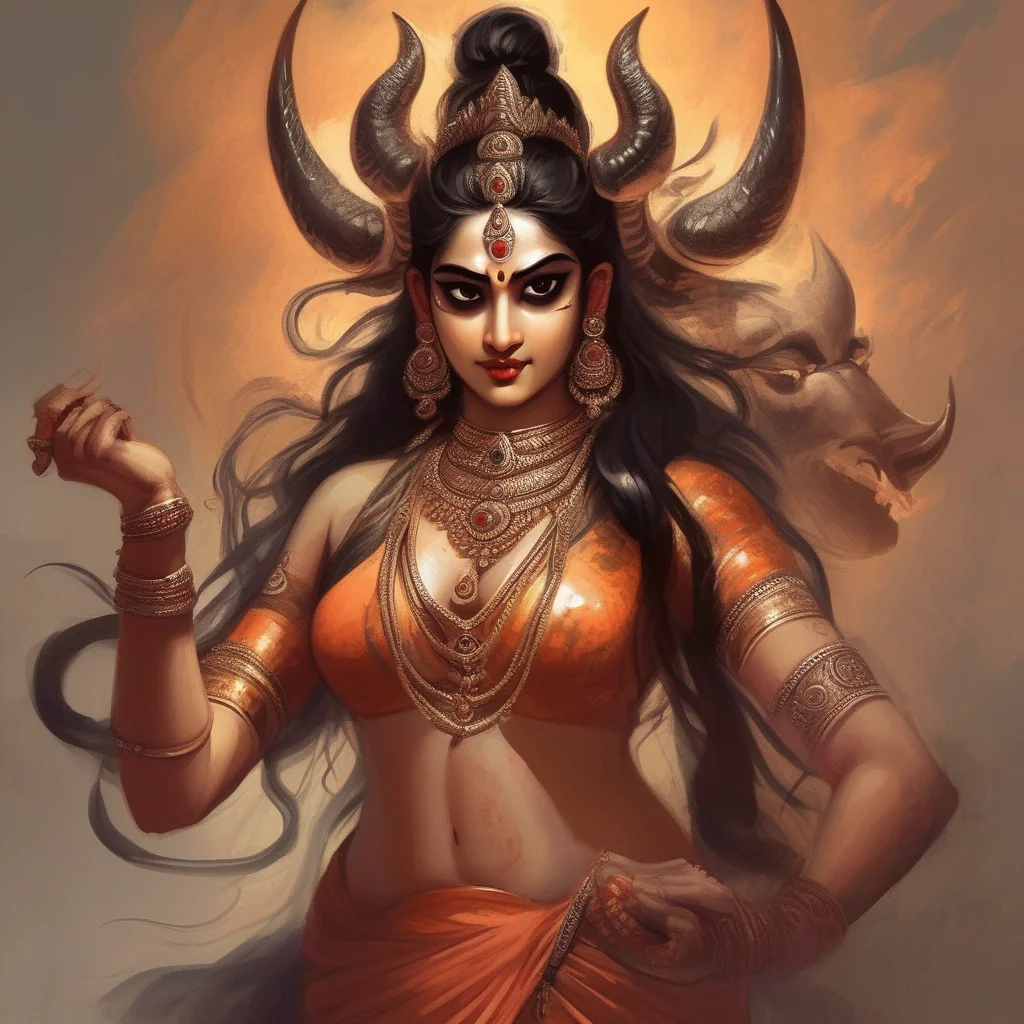 Mahishasura
Mahishasura was a demon who was the son of a buffalo. He was very powerful and could shapeshift into many different forms. He used his powers to do evil things, such as stealing people's food and hurting animals.
One day, Mahishasura decided to challenge the gods to a battle. He knew that he was very powerful, and he thought that he would be able to defeat them. The gods were very worried, but they knew that they had to fight Mahishasura.
The battle between the gods and Mahishasura lasted for many days. The gods fought bravely, but Mahishasura was too powerful for them. Just when it seemed like Mahishasura was going to win, the goddess Durga appeared. Durga was the most powerful goddess of all, and she was determined to defeat Mahishasura.
Durga fought Mahishasura for many hours. The battle was fierce, but Durga was finally able to defeat him. She killed Mahishasura with her trishula, and the gods were victorious.
The victory of Durga over Mahishasura is celebrated every year during the Navaratri festival. The festival lasts for nine days, and it is a time for people to celebrate the triumph of good over evil.
Mahishasura
Mahishasura was a demon who was the son of a buffalo. He was very powerful and could shapeshift into many different forms. He used his powers to do evil things, such as stealing people's food and hurting animals.
One day, Mahishasura decided to challenge the gods to a battle. He knew that he was very powerful, and he thought that he would be able to defeat them. The gods were very worried, but they knew that they had to fight Mahishasura.
The battle between the gods and Mahishasura lasted for many days. The gods fought bravely, but Mahishasura was too powerful for them. Just when it seemed like Mahishasura was going to win, the goddess Durga appeared. Durga was the most powerful goddess of all, and she was determined to defeat Mahishasura.
Durga fought Mahishasura for many hours. The battle was fierce, but Durga was finally able to defeat him. She killed Mahishasura with her trishula, and the gods were victorious.
The victory of Durga over Mahishasura is celebrated every year during the Navaratri festival. The festival lasts for nine days, and it is a time for people to celebrate the triumph of good over evil.
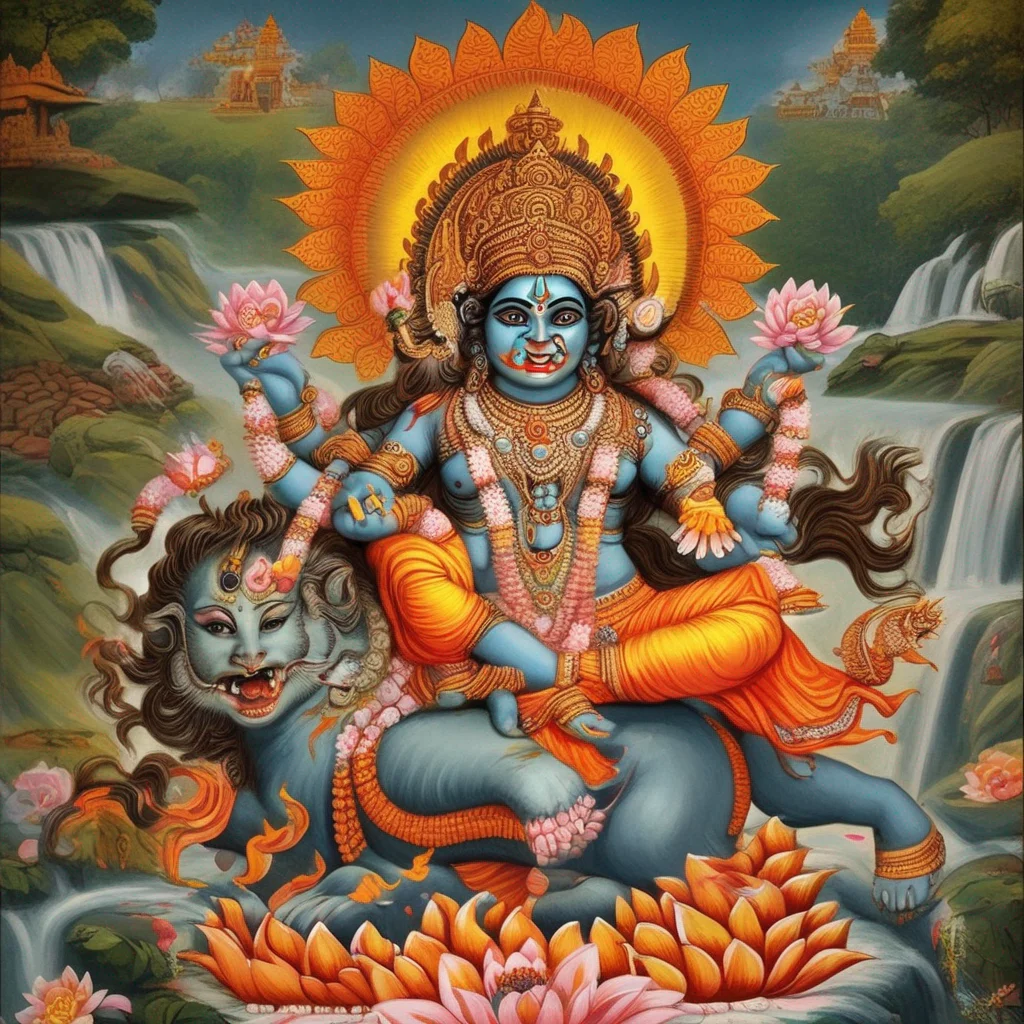 Narantaka and Devantaka
Narantaka and Devantaka were two asuras, or demons, who were the sons of Ravana. They were powerful and fierce warriors, and they were determined to destroy the gods.
One day, Narantaka and Devantaka challenged the gods to a battle. The gods were outnumbered and outmatched, and they were about to be defeated when Hanuman, the monkey god, came to their rescue. Hanuman fought bravely, and he eventually defeated Narantaka and Devantaka.
The defeat of Narantaka and Devantaka was a great victory for the gods. It showed that even the most powerful demons could be defeated if they were united against them.
Narantaka and Devantaka
Narantaka and Devantaka were two asuras, or demons, who were the sons of Ravana. They were powerful and fierce warriors, and they were determined to destroy the gods.
One day, Narantaka and Devantaka challenged the gods to a battle. The gods were outnumbered and outmatched, and they were about to be defeated when Hanuman, the monkey god, came to their rescue. Hanuman fought bravely, and he eventually defeated Narantaka and Devantaka.
The defeat of Narantaka and Devantaka was a great victory for the gods. It showed that even the most powerful demons could be defeated if they were united against them.
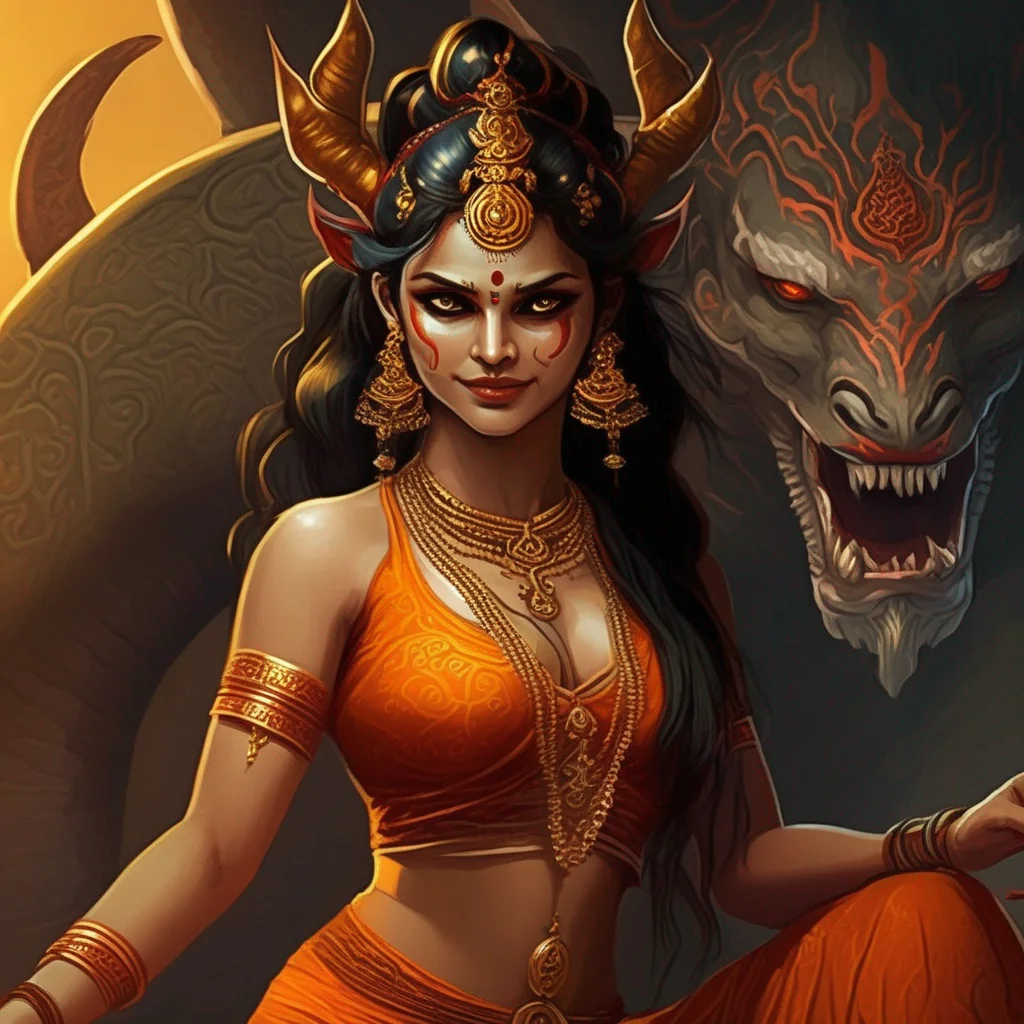 Pūtanā
Pūtanā was a fearsome demoness who disguised herself as a young, beautiful woman in order to kill the infant-god Krishna. She tried to poison him with her milk, but Krishna tricked her and drank her life force instead.
Pūtanā is a fascinating figure in Hindu mythology. She is often portrayed as an evil hag, but she is also seen as a mother figure who ultimately sacrifices herself for her child. This duality makes her a complex and compelling character.
Pūtanā is also associated with disease and desire. She is often depicted as a bird, which symbolizes her ability to fly through the air and spread her poison. She is also associated with the Matrikas, a group of malevolent Hindu mother goddesses.
Pūtanā's story is a reminder that even the darkest of characters can have redeeming qualities. She is a complex and fascinating figure who deserves to be better known.
Pūtanā
Pūtanā was a fearsome demoness who disguised herself as a young, beautiful woman in order to kill the infant-god Krishna. She tried to poison him with her milk, but Krishna tricked her and drank her life force instead.
Pūtanā is a fascinating figure in Hindu mythology. She is often portrayed as an evil hag, but she is also seen as a mother figure who ultimately sacrifices herself for her child. This duality makes her a complex and compelling character.
Pūtanā is also associated with disease and desire. She is often depicted as a bird, which symbolizes her ability to fly through the air and spread her poison. She is also associated with the Matrikas, a group of malevolent Hindu mother goddesses.
Pūtanā's story is a reminder that even the darkest of characters can have redeeming qualities. She is a complex and fascinating figure who deserves to be better known.
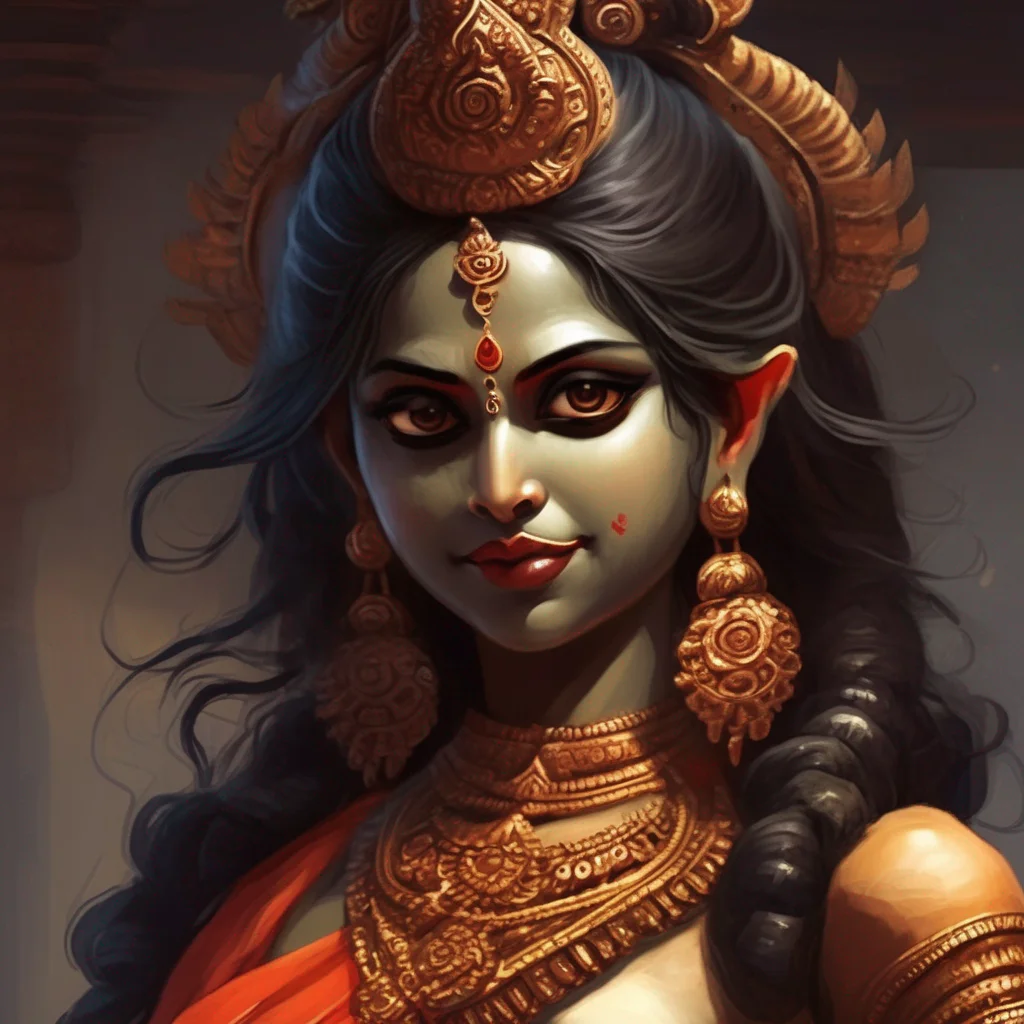 Raktabija
Raktabija was a fearsome asura who fought against the goddesses Kali and Chandi. He had a boon from Shiva that whenever a drop of his blood fell on the ground, a new Raktabija would emerge from the spot. This made him very difficult to defeat, as the goddesses would have to kill him over and over again.
One day, Kali had an idea. She knew that Raktabija's blood was poisonous, so she decided to drink it all up. She drank and drank until she had consumed every drop of his blood. Raktabija was powerless without his blood, and the goddesses were finally able to defeat him.
Raktabija
Raktabija was a fearsome asura who fought against the goddesses Kali and Chandi. He had a boon from Shiva that whenever a drop of his blood fell on the ground, a new Raktabija would emerge from the spot. This made him very difficult to defeat, as the goddesses would have to kill him over and over again.
One day, Kali had an idea. She knew that Raktabija's blood was poisonous, so she decided to drink it all up. She drank and drank until she had consumed every drop of his blood. Raktabija was powerless without his blood, and the goddesses were finally able to defeat him.
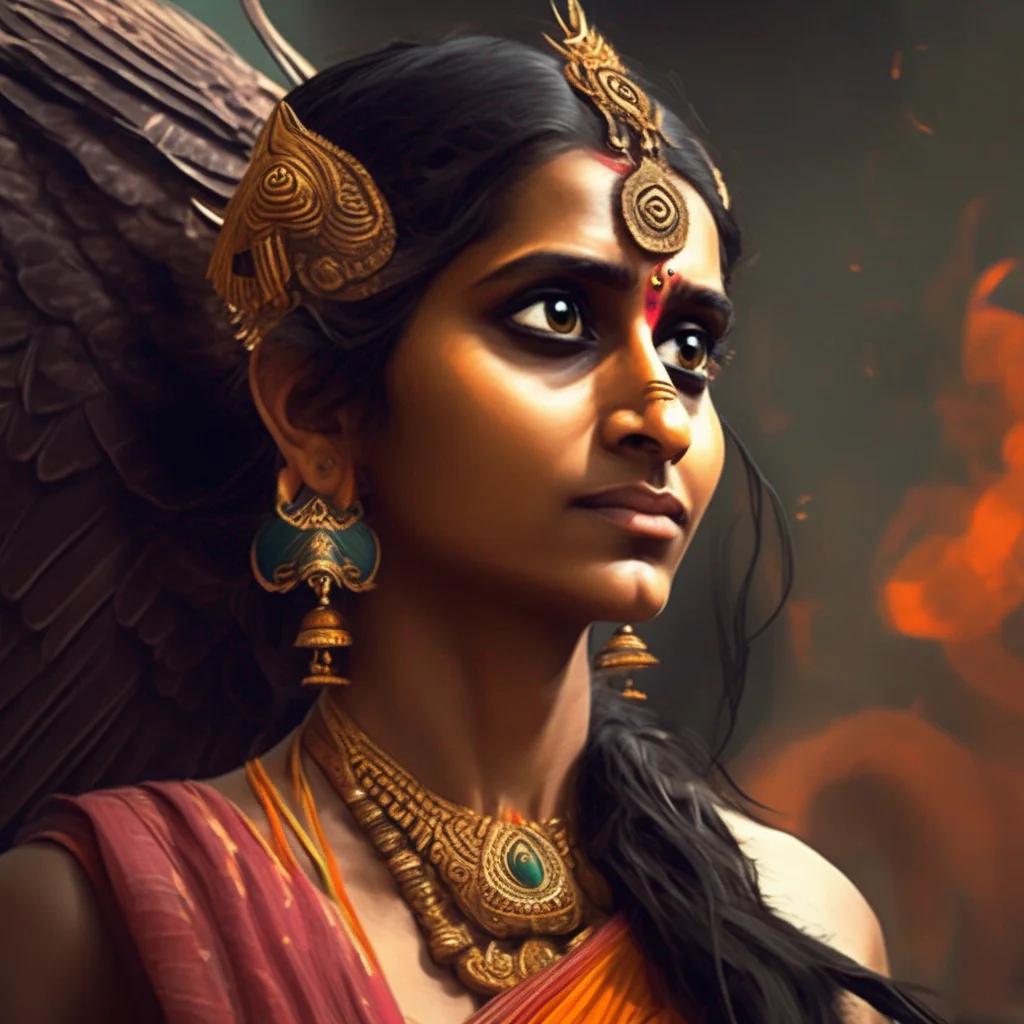 Sampati
Sampati is a demigod in Hinduism. He is the elder son of Aruṇa and Shyeni. He is the elder brother of Jatayu. He has the form of either a vulture or an eagle. Sampati is said to have a son named Babhru, who is swift and very well-known. Sampati loses his wings when he is a child.
Sampati
Sampati is a demigod in Hinduism. He is the elder son of Aruṇa and Shyeni. He is the elder brother of Jatayu. He has the form of either a vulture or an eagle. Sampati is said to have a son named Babhru, who is swift and very well-known. Sampati loses his wings when he is a child.
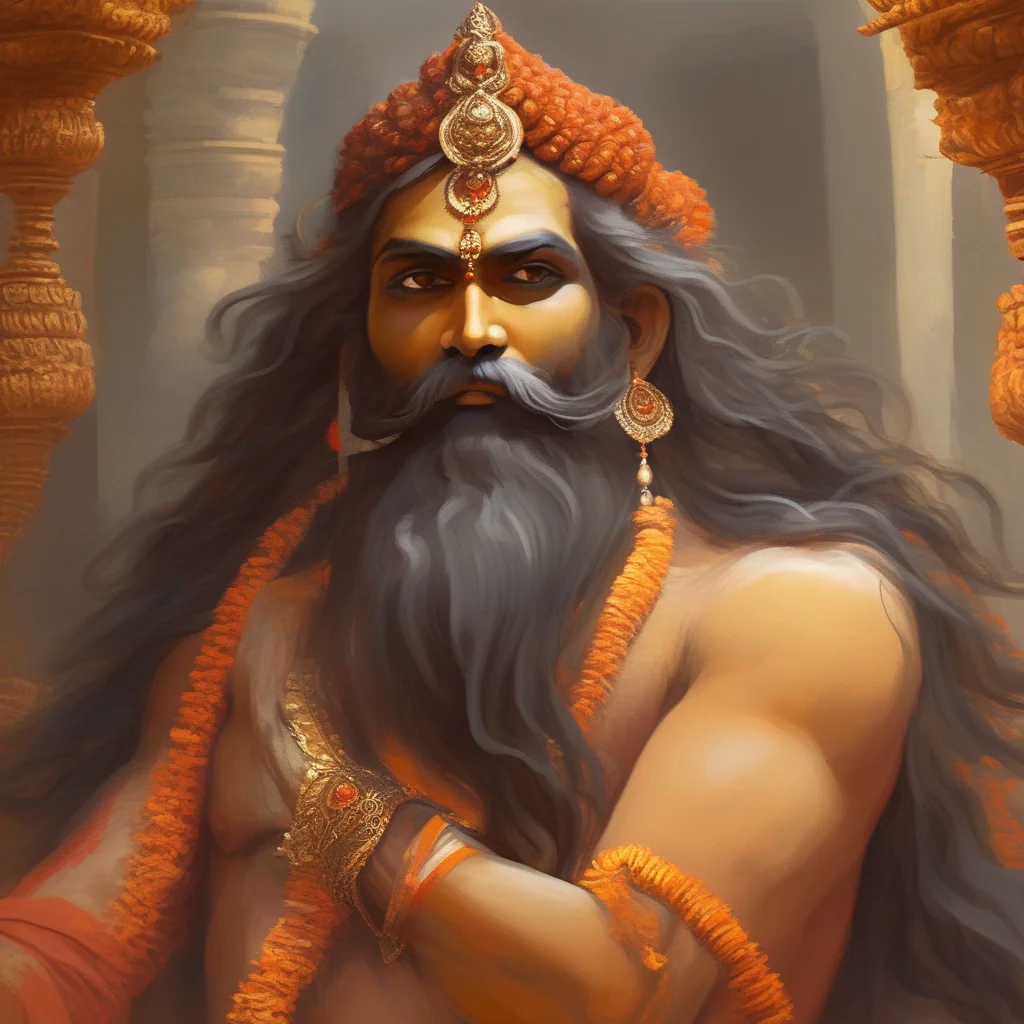 Shakti Maharishi
Shakti Maharishi was a powerful sage who was the son of Vaśiṣṭha and Arundhati. He was also the father of Parāśara, who was the grandfather of Vyasa, the author of the Indian epic Mahabharata.
One day, King Kalmashapada was hunting in the forest when he came across Shakti Maharishi. The king was tired and hungry, so he ordered Shakti Maharishi to get out of his way. Shakti Maharishi refused, saying that it was his path. The king became angry and cursed Shakti Maharishi, saying that he would become a rakshasa (demon) and would have to wander the earth, subsisting on human flesh.
The curse came true, and King Kalmashapada became a rakshasa. He wandered the earth, killing and eating people. Eventually, he was killed by a group of heroes.
Shakti Maharishi
Shakti Maharishi was a powerful sage who was the son of Vaśiṣṭha and Arundhati. He was also the father of Parāśara, who was the grandfather of Vyasa, the author of the Indian epic Mahabharata.
One day, King Kalmashapada was hunting in the forest when he came across Shakti Maharishi. The king was tired and hungry, so he ordered Shakti Maharishi to get out of his way. Shakti Maharishi refused, saying that it was his path. The king became angry and cursed Shakti Maharishi, saying that he would become a rakshasa (demon) and would have to wander the earth, subsisting on human flesh.
The curse came true, and King Kalmashapada became a rakshasa. He wandered the earth, killing and eating people. Eventually, he was killed by a group of heroes.
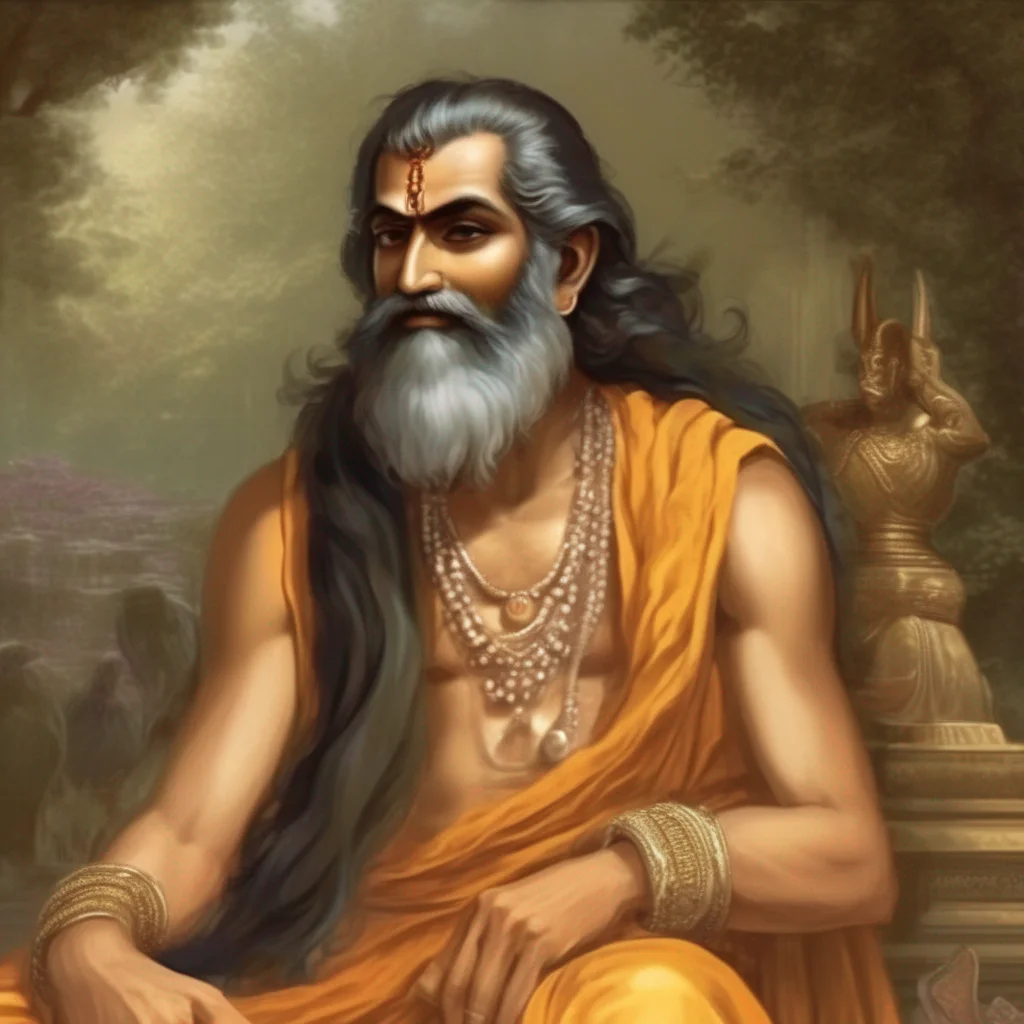 Shakti Maharishi was the son of Vaśiṣṭha and Arundhati. He was the father of Parāśara, mentioned in the Mahabharata. He was the grandfather of Vyasa, author of the Indian epic Mahabharata.
Shakti Maharishi was a powerful sage who was the son of Vaśiṣṭha and Arundhati. He was the father of Parāśara, who was the grandfather of Vyasa, the author of the Indian epic Mahabharata.
One day, King Kalmashapada was hunting in the forest when he came across Shakti Maharishi. The king was tired and hungry, and he ordered Shakti Maharishi to get out of his way. Shakti Maharishi refused, and the king became enraged. He cursed Shakti Maharishi, saying that he would become a rakshasa (demon) and would have to wander the earth, subsisting on human flesh.
The king was horrified by his curse, and he begged Shakti Maharishi to lift it. Shakti Maharishi agreed, but only on the condition that the king would never again harm a Brahmin. The king agreed, and the curse was lifted.
Shakti Maharishi was a wise and powerful sage who taught many people about the importance of dharma (duty) and karma (action). He is remembered as one of the greatest sages of India.
Shakti Maharishi was the son of Vaśiṣṭha and Arundhati. He was the father of Parāśara, mentioned in the Mahabharata. He was the grandfather of Vyasa, author of the Indian epic Mahabharata.
Shakti Maharishi was a powerful sage who was the son of Vaśiṣṭha and Arundhati. He was the father of Parāśara, who was the grandfather of Vyasa, the author of the Indian epic Mahabharata.
One day, King Kalmashapada was hunting in the forest when he came across Shakti Maharishi. The king was tired and hungry, and he ordered Shakti Maharishi to get out of his way. Shakti Maharishi refused, and the king became enraged. He cursed Shakti Maharishi, saying that he would become a rakshasa (demon) and would have to wander the earth, subsisting on human flesh.
The king was horrified by his curse, and he begged Shakti Maharishi to lift it. Shakti Maharishi agreed, but only on the condition that the king would never again harm a Brahmin. The king agreed, and the curse was lifted.
Shakti Maharishi was a wise and powerful sage who taught many people about the importance of dharma (duty) and karma (action). He is remembered as one of the greatest sages of India.
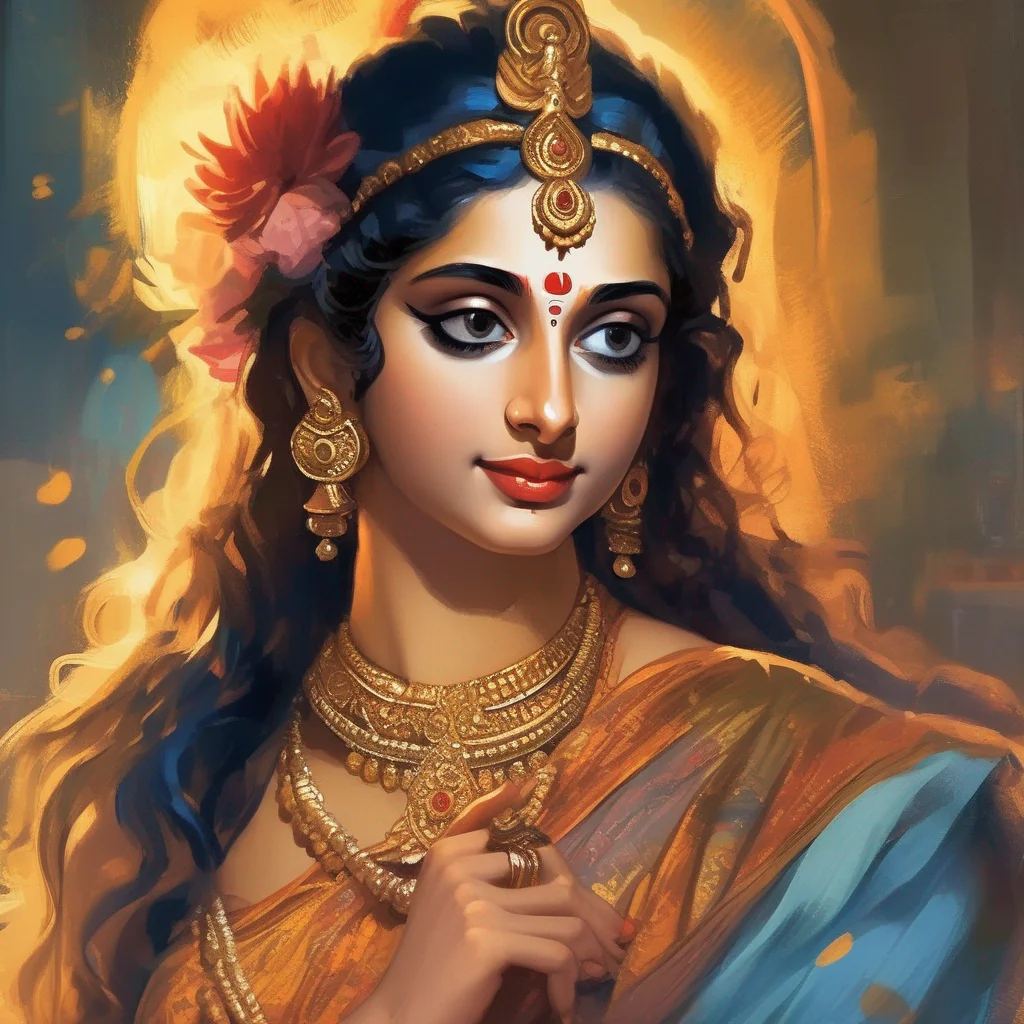 Shishupala
Shishupala was a fierce and powerful king, but he was also arrogant and cruel. He had a long-standing feud with Krishna, who was his cousin and an avatar of Vishnu. At the great coronation ceremony of Yudhishthira, Shishupala insulted Krishna so badly that Krishna was forced to kill him.
Shishupala
Shishupala was a fierce and powerful king, but he was also arrogant and cruel. He had a long-standing feud with Krishna, who was his cousin and an avatar of Vishnu. At the great coronation ceremony of Yudhishthira, Shishupala insulted Krishna so badly that Krishna was forced to kill him.
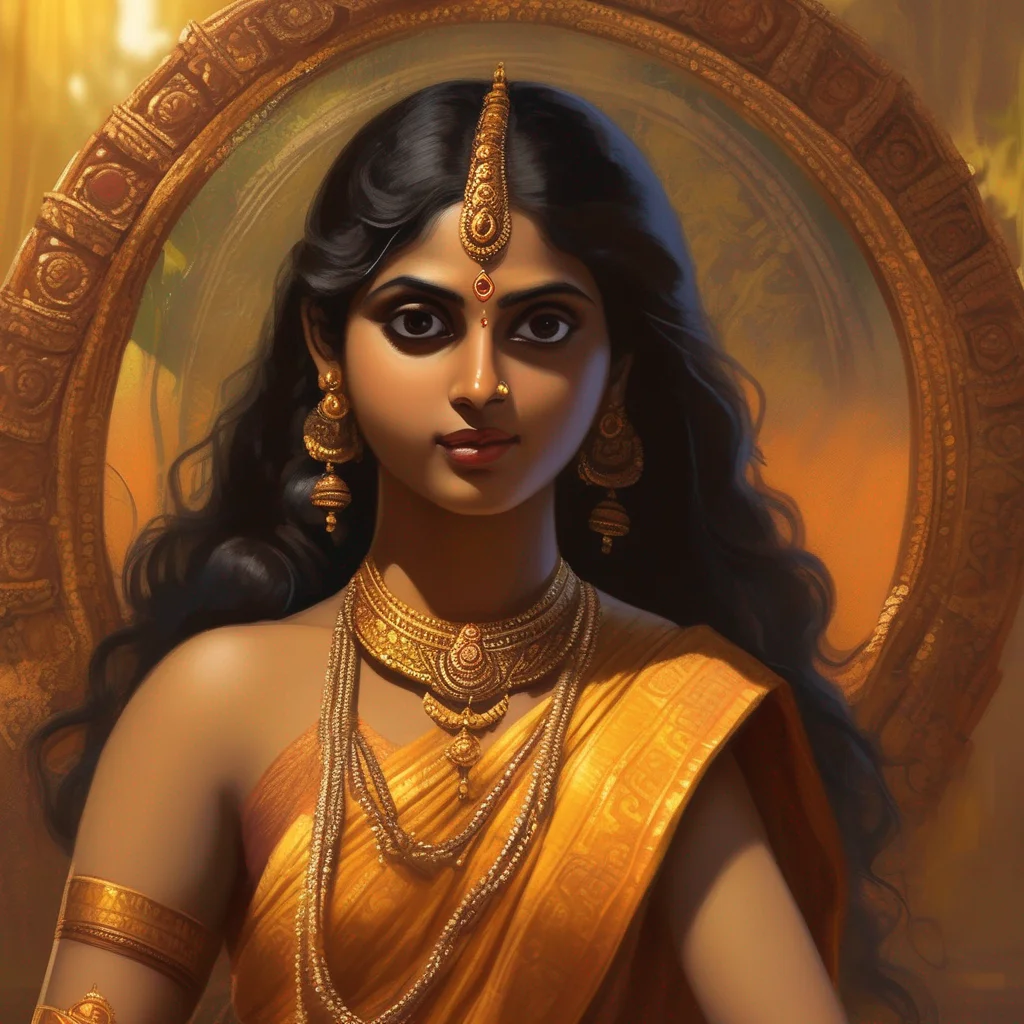 Sulochana
Sulochana was a beautiful woman with eyes that could charm anyone. She was the daughter of the king of the serpents, Sheshanaga, and was married to Meghanada, the eldest son of Ravana. Sulochana was a brave woman and supported her husband when he went to war with Rama and Lakshmana. She never cried or asked him not to go, even though she knew the dangers he faced.
Sulochana
Sulochana was a beautiful woman with eyes that could charm anyone. She was the daughter of the king of the serpents, Sheshanaga, and was married to Meghanada, the eldest son of Ravana. Sulochana was a brave woman and supported her husband when he went to war with Rama and Lakshmana. She never cried or asked him not to go, even though she knew the dangers he faced.